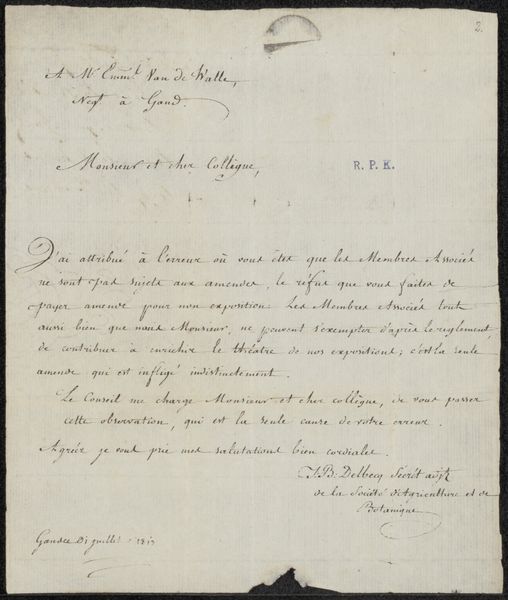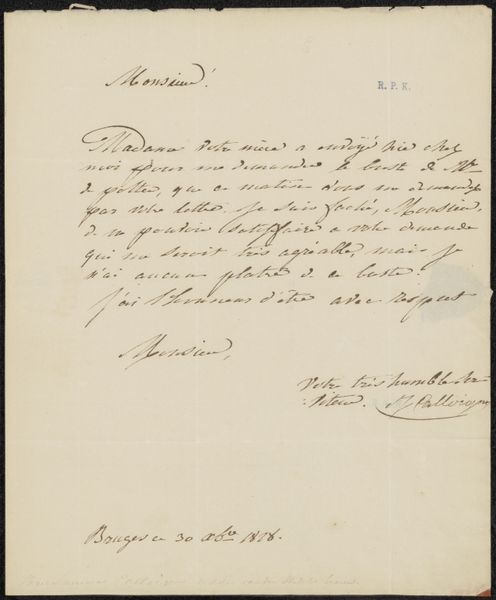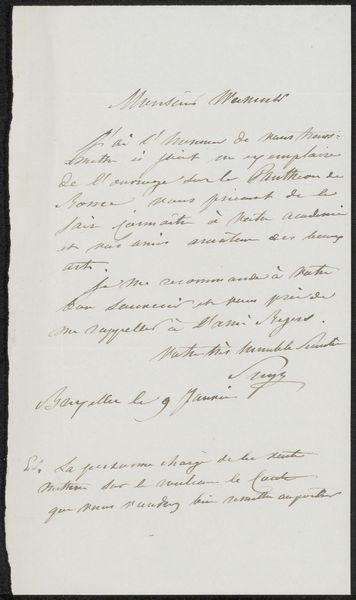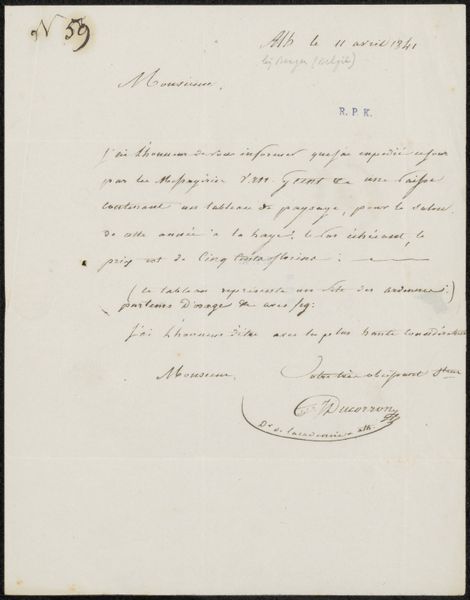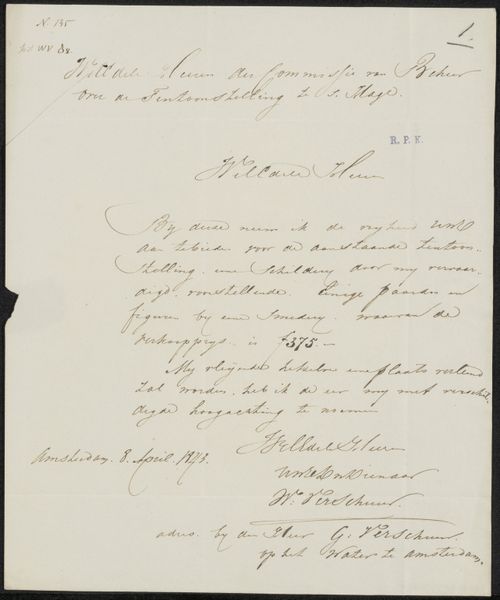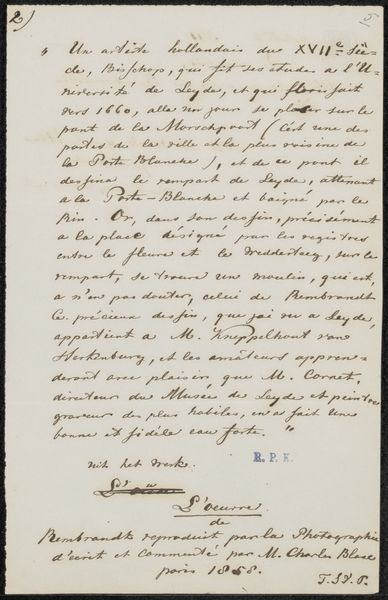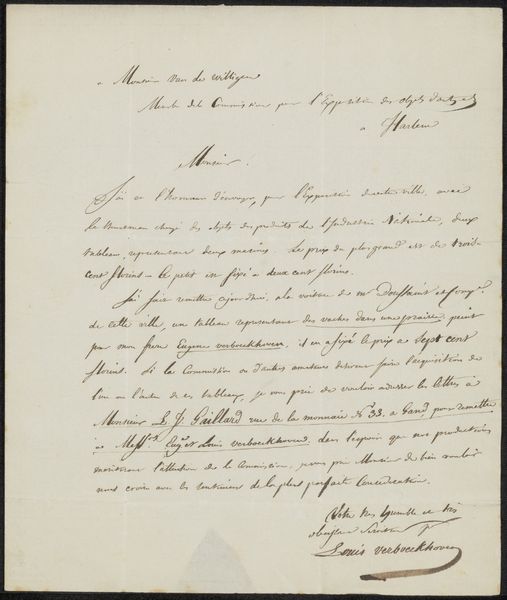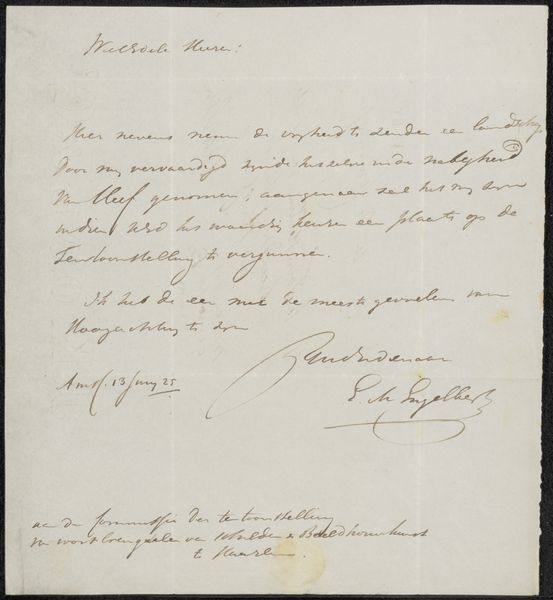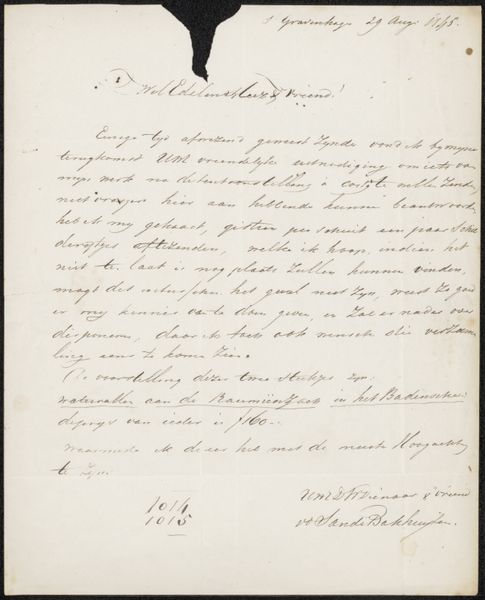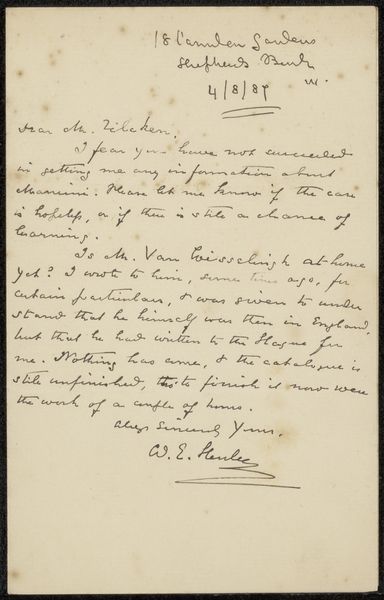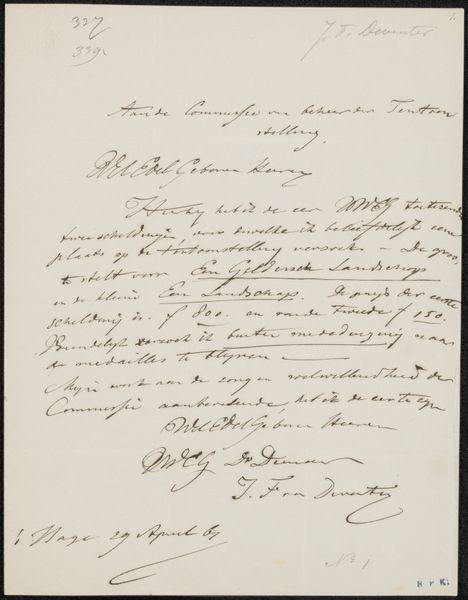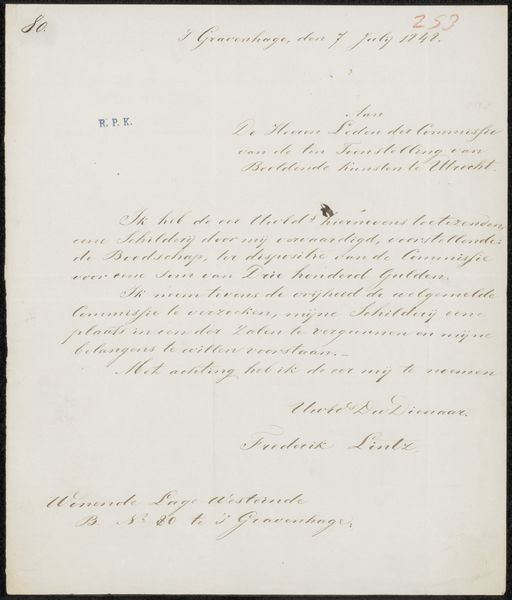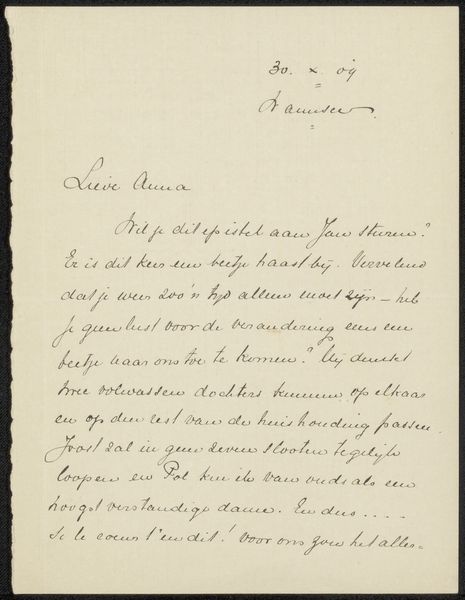
Aantekening betreffende Rembrandt Harmensz. van Rijn after 1858
0:00
0:00
jacobusludovicuscornet
Rijksmuseum
drawing, paper, ink, pen
#
drawing
#
ink paper printed
#
pen sketch
#
hand drawn type
#
paper
#
personal sketchbook
#
ink
#
ink drawing experimentation
#
pen-ink sketch
#
ink colored
#
pen work
#
sketchbook drawing
#
pen
#
sketchbook art
#
modernism
#
monochrome
Copyright: Rijks Museum: Open Domain
Curator: So, here we have "Aantekening betreffende Rembrandt Harmensz. van Rijn," which translates to "Note Regarding Rembrandt Harmensz. van Rijn." It's an ink drawing on paper, created after 1858 by Jacobus Ludovicus Cornet. Seeing it here at the Rijksmuseum, what's your first take? Editor: Immediately, I’m drawn to the penmanship. It’s a dance of cursive strokes, almost a fabric woven from ink. You can almost feel the pressure of the nib on the paper. What strikes me, too, is how informal it is, resembling more of a hastily filled journal than a finished work of art. Curator: Yes, exactly! It does feel very personal. There's a rawness, an immediacy to the notes about Rembrandt. I find myself wondering about the artist's frame of mind, what spurred this moment of reflection. Was he researching Rembrandt? Pondering artistic legacy? Editor: The question of labor really surfaces for me here, too. This isn't just about Cornet's artistic inspiration but about the very physical act of transcription, of preserving information through manual means. Each stroke carries not just the artist's idea but his literal effort, an echoing act of making and archiving. Curator: Interesting point. And, in a way, Cornet's engaging in a conversation across time, with Rembrandt himself. This little drawing becomes a material bridge connecting artistic souls through the ages. He is noting descriptions of other artwork; it is like he’s thinking through someone else. Editor: Right, and if we look at it through a materialist lens, the act of transcription becomes charged with intention. Cornet is literally re-presenting somebody else's text, filtered through his handwriting and understanding of graphic presentation. Even that small 'NB' in the left lower quarter—a whole world is hinted at! Curator: I agree completely. There's such a potent layering here, the ghost of Rembrandt's genius prompting Cornet's hand to move across the page in such an urgent script, it adds a strange power, you could almost miss. Editor: For me, focusing on the materials shifts our understanding. It becomes more than just artistic expression; it’s about Cornet's active engagement in preserving cultural memory through the laborious act of handwriting and inkmaking—a very deliberate act. Curator: Absolutely. This piece reminds me how the most profound insights can arise from the most humble of materials. Editor: Precisely! And seeing such clear handwriting helps one to contemplate its historical placement amidst the Industrial Revolution: one foot set firmly into the past and the other tentatively reaching towards mechanization.
Comments
No comments
Be the first to comment and join the conversation on the ultimate creative platform.
